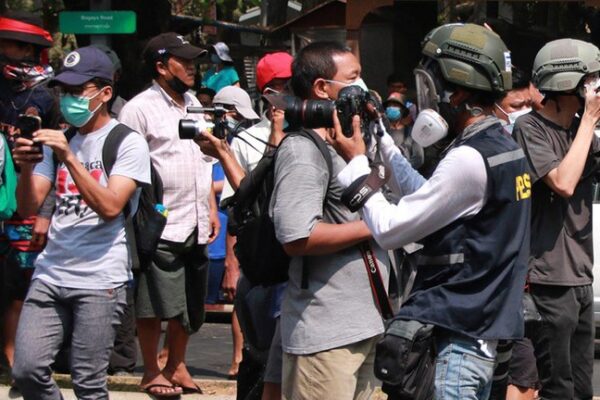
New in North Korea: Hair loss products
Hair loss products are now for sale in North Korea amid an apparent uptick in the number of people struggling with thinning hair or going bald, experts in South Korea with knowledge of the country told Radio Free Asia. Examples of such products can be seen on the homepage of Foreign Trade of the DPRK, or the Democratic People’s Republic of Korea, the formal name of North Korea. But many of the treatments are too expensive for ordinary people – and may not be very effective, the experts said. A North Korean man waits outside a barber shop next to a poster with different types of hairstyles in Pyongyang in 2015. Credit: Wong Maye-E/AP North Koreans appear to be suffering from hair loss for a variety of reasons, said Choi Jeong Hoon, who worked as a doctor in the North before fleeing to the South. He is now a senior researcher at the Public Policy Research Institute at Korea University in Seoul. Some experience hair loss from the aftereffects of often life-threatening typhoid and paratyphoid fever, he said. “After suffering from these infections, hair loss is severe,” he said. Harsh chemical ingredients in soap and laundry detergent that North Koreans use to wash their hair also can cause hair to fall out because they can irritate the scalp, Choi said. “It is not easy to find mild chemical products in North Korea’s current situation,” he added. “Ordinary residents cannot afford to worry about hair loss.” Military caps Caps worn in the military – all able-bodied men are typically required to serve 10 years in the armed forces – may also damage one’s hair, said Ahn Kyung Soo, head of DPRKHealth.org, a blog on health issues in North Korea. Sweating while wearing the cap inhibits proper ventilation, leading to unpleasant odors and bacterial buildup that can clog pores, ultimately resulting in thinning hair, Ahn said. “When one goes into the military in North Korea, the environment is poor,” he said. “For example, there are testimonies even in South Korea that wearing a military cap causes hair loss.” A man undergoes a hair-restoration procedure at the Sinuiju Cosmetics Factory in the North Korean border city of Sinuiju in 2018. Credit: Ed Jones/AFP Hair loss treatments in North Korea are divided into pharmaceuticals and functional cosmetics, creating some consternation about which to choose, the experts said. Among the new products are Guritdae Hair Loss Tincture manufactured by Pyongchon Koryo Pharmaceutical Factory, which treats patchy and thinning hair and total hair loss that result from autoimmune disorders that attack hair follicles, causing hair to fall out. Then, there’s Hair Growth Tonic made by the Shinuiju Cosmetics Factory whose label says it’s effective for preventing premature hair loss and for promoting hair growth. Effectiveness questionable Though the products may contain ingredients that are believed to be good for hair or skin, it’s difficult to verify their efficacy as medicines, Ahn said. “North Korean medicines cannot actually be verified,” he told Radio Free Asia. Shinuiju Cosmetics Factory’s Hair Growth Tonic. Credit: Handout from Chosun Trade North Korean hair loss medicines are basically “oriental medicines” — topical tonics based on medicinal herbs, so their effect is likely to be minimal, said Choi. For example, users are to dip a pine needle-like brush into a glass bottle and apply it to the scalp to stimulate areas affected by hair loss, he said. But this might not do the trick because hair loss can be affected by male hormones and result from skin diseases, Choi said. “So, applying medicine on the affected part will not solve the problem,” he said. Some North Koreans associate a loss of hair, called bondae in Korean, with poverty. A public salon in Pyongyang, North Korea, in 2017. Credit: Ed Jones/AFP But at other times it has been viewed as a sign of wealth. “This perception has become entrenched because the so-called ‘major bondae’ pattern of hair loss is particularly prevalent among wealthy and powerful people, such as officials or representatives of companies that earn foreign currency,” Choi said. “It refers to the image of being greedy, having a lot of luck, and making a lot of money,” he added. Even in South Korea, until the 1980s and early 1990s, people didn’t think baldness looked bad, said Choi. “There was a perception that having a belly and a bald head made one look manly and rich.” Translated by Claire Shinyoung Oh Lee for RFA Korean. Edited by Roseanne Gerin and Malcolm Foster.








